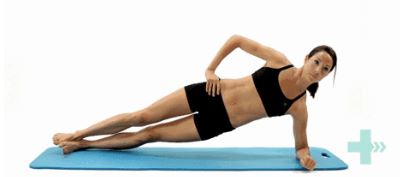
Running is a fun and convenient way to exercise, it can help to keep you fit and in shape, it also requires very little equipment. All that you need is a good pair of running shoes that suit your running requirements and you’re all ready to go. Running injuries can be frustrating, preventing you from enjoying your run, and can stop you from achieving your goals as quickly as you’d like to.
Overuse injuries are very common amongst runners. These occur when training is increased too quickly ‘too much too soon’ and exceeds the body’s capacity to handle the stresses of running.
Consistent training with gradual increases over months are key in minimising this risk. However, strength training exercises are also a great way to help improve the body’s capacity to handle running training load. Here are some exercises that will help you to achieve this.
Exercise No. 1 Calf Raises

This exercise is great for strengthening the calf, achilles tendons and plantar fascia.
Stand on the edge of a step, lower your heel down below the step and then raise your heel back up engaging the calf muscles.
Exercise No.2 Side Plank

The side plank exercise is great for core strength and hip stabilising glute muscles.
It can be done whilst kneeling or on heels, ensure that your hips do not droop towards the floor. Lifting your top leg off of the ground will engage the glutes on both legs.
Exercise No.3 Bridging

This exercise strengthens your hamstrings and glutes.
Begin with a double leg then progress to a single leg. Once you have mastered this, you can then progress to a single leg with your heel on the edge of a step. Your weight can then be placed on your hips to increase resistance.
Exercise No.4 Squat

The squat exercise is great for improving power when running and building up the quadricep muscles, these are helpful for shock absorption. As you become stronger, these exercises should be progressed to using weight either with a barbell on your shoulders or holding dumbbells.
Before starting any strength training exercises, it is recommended that you consult your Physiotherapist. They can help you to develop an exercise program, ensuring that exercises are appropriate for you. As well as ensuring that you perform your exercises with the correct technique, progressing as you become stronger. To find your nearest practice you can visit this link.
This blog was written by Adrian Potter
